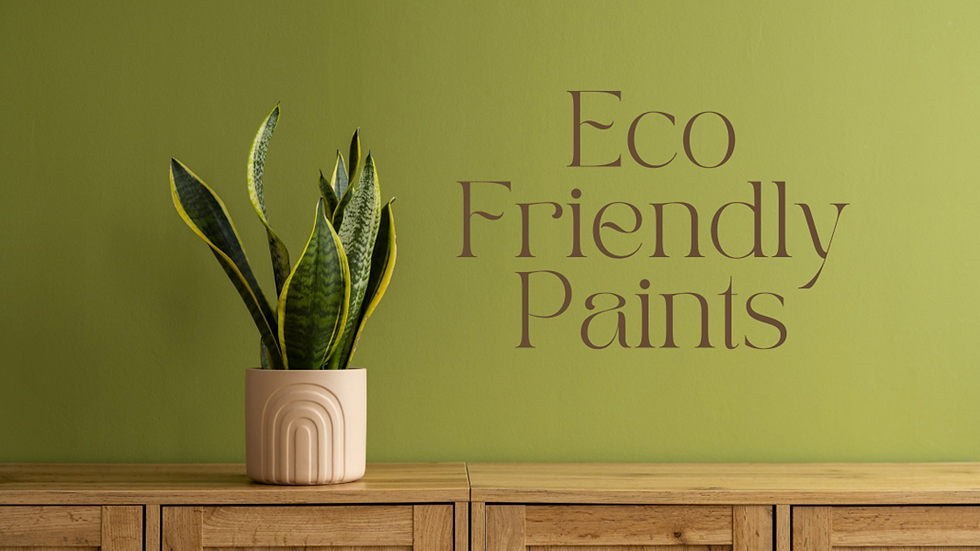Eco-Friendly Paints: Are Thermal Insulating Paints Worth It for Your Home?
- Matej Svoboda
- Aug 5
- 2 min read
In Ireland, where energy costs are steadily rising and winters can be long and damp, homeowners are increasingly looking for smart ways to improve insulation. One option that’s gaining attention is thermal insulating paint — a type of eco-friendly paint that claims to reduce heat loss, boost energy efficiency, and create a more comfortable home environment. But does it really work? And is it worth the investment? Let’s break it down

What Are Thermal Insulating Paints?
Thermal insulating paints are formulated with special materials, such as ceramic microspheres or hollow glass bubbles, that reduce heat transfer. When applied to walls or ceilings, they create a barrier that reflects heat back into the room — especially useful in colder months. These paints are also known for their anti-condensation and anti-mould properties, making them a popular choice for older or poorly insulated homes.
Benefits of Using Eco-Friendly Thermal Paint
One of the key advantages of thermal insulating paint is its potential to lower heating bills by improving insulation. These paints also help reduce condensation, which can be crucial in preventing mould growth in areas like kitchens and bathrooms. For those concerned about environmental impact, many thermal paints are now available in low-VOC (volatile organic compounds) formulas. This makes them a healthier option for your home and for the planet. Versatility is another bonus — they can be applied on interior walls and ceilings, making them ideal for a range of rooms from bedrooms to utility spaces.

When Is It Most Effective?
While thermal paint isn't a complete substitute for traditional insulation, it works best when used as part of a broader energy-saving strategy. Homes that already feature cavity wall insulation and double glazing can benefit from the added efficiency that thermal paint provides. It's especially effective in cold, north-facing rooms, as well as bathrooms and bedrooms prone to damp. In houses with solid walls where traditional insulation is hard to implement, thermal paint becomes an accessible and practical alternative.
Things to Consider Before Buying
Before choosing thermal insulating paint, it's important to manage expectations. While it adds value, it won't fully replace standard insulation materials. Application also matters — surfaces need to be properly prepared to achieve the best results. Keep in mind that these paints tend to be more expensive than typical emulsions, so weighing cost against potential energy savings is key. Lastly, effectiveness can vary depending on the wall construction, paint brand, and specific room conditions.

Final Thoughts: Is It Worth It?
Thermal insulating paints are a great eco-conscious option if you want to add an extra layer of comfort to your home. While they won't replace proper insulation, they can enhance it especially in older homes where other improvements may not be feasible. The key is to choose quality products and have them professionally applied.
Interested in Eco paint?
Get in touch for a free quote or to learn more about our energy-efficient paint options.



